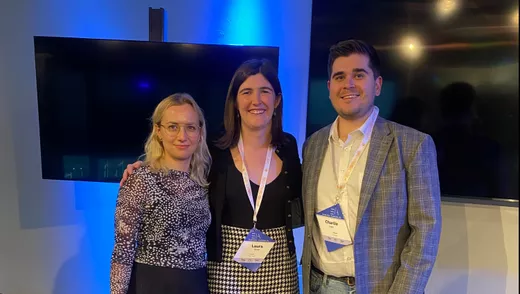
How to prepare a CV? Recruiters’ edition
The first part of any job hunting journey is submitting an application. Easier said than done, right? As an applicant, you’ve got to know what to write, while emphasising the parts most relevant to the job role. Your application will be read by talent acquisition specialists and hiring managers, who know exactly what they’re looking for in a CV. Do you want your application to stand out? Our hiring team at Vinted has put together 10 tops tips for preparing your CV. Find out more about what our talent acquisition specialists look for in an exceptional application, and learn what you can do to increase your chances of getting invited for an interview.
1. Send your CV in the same language as the job description is written
This is one of the most common mistakes we see while working at Vinted. Being an international company, hiring in many different countries, we see that sometimes candidates provide their applications in their local language. While it might feel natural, we recommend avoiding it, as you never know which talent acquisition specialist or hiring manager will be reading your application. Better to prepare it in the language used in the application (unless specified otherwise), so that the hiring managers and recruiters will be able to understand it.
2. Don’t forget your contact information
It might sound completely obvious in this day and age, but it’s a common mistake that people make. Don’t forget to tell us how to contact you – preferably by email and phone number. Also, be sure to select the correct time zone in your application, particularly if you’re setting your availability on an online calendar or platform. We’ve learned this one the hard way – by having to reschedule interviews because they were set in conflicting time zones.
3. Put your CV in reverse chronological order
Our recruiters often see people using chronological order in their CV. What they’d really love to see is your most recent experience first. So if you were studying between 2019–2022, and working in 2023, the work experience should be higher up on your CV. Why does it matter? Because it’s easier for recruiters to get an accurate picture of your most recent experience this way. Don’t worry if some of your recent experience is in a different field – tell us what transferable skills you’ve gained from working there, which you could use in the role you’re applying for.
4. Personal photographs are optional
There is no expectation from us to see a picture on a CV, it’s completely your decision, depending on your personal preferences. Whether you decide to include a photo of yourself or not, it won’t make a difference to the selection process.
5. Personal information is optional
Our hiring decision is not affected by any personal information that you tell us. If you want to share information about yourself (such as age, location, marital status and hobbies) because you think it’s relevant to the position and demonstrates why it would make you a good fit, then go ahead. If you would prefer not to mention any of this, then that is also completely fine, and won’t make a difference to your application.
6. Tailor your CV to the job requirements
Rather than sending out a generic CV every time, create a different version for each job you’re applying for. Look through the job description and highlight the reasons why you would be a good fit for the role. Be sure to tell us about any skills and experiences that align with the job requirements. Try to avoid simply bullet-pointing your skills in a long list. Instead try to provide concrete examples that demonstrate these skills E.g. “Analytical - Analysed 2019 financial forecast and lowered costs on cookie purchases by 30%”. If you don’t meet all of the job requirements, don’t let that put you off – just try to demonstrate to us why you’re a good potential fit for the job. Lastly, have a think about what transferable skills you could bring to the role. These don’t necessarily have to be skills that you’ve picked up at work – you can count on life experience as well.
7. Good use of space and format
Keep your CV structured and easy to read, so that recruiters can easily find the information they’re looking for. For example, you can put information about your education, experience and skills in different sections or lists. If you can, try to keep it to one or two pages, with the most recent information (experiences, skills, etc.) on the first page. There are plenty of free CV templates online which you can use if you need inspiration. When it comes to format, try to send your CV as a PDF if you can, as this format works across all devices and is universally compatible, meaning that it can be read from almost anywhere.
8. Update all your information
If you’ve included links in your CV to other material, such as your LinkedIn profile, online portfolio, or gitHub, make sure that these platforms are up to date with your latest information or most recent work. It will strengthen your chances of being considered for the position.
9. Answers from the heart
We value genuine personal answers at Vinted. If the application requires additional questions (for example, “why would you like to work here?”), respond to this question from a personal angle. Looking within will not only help you with your application, it will also allow you to personally reflect on the real reasons why you want to work there.
10. Spellcheck
It can be so disappointing to encounter an otherwise fantastic CV that hasn’t been properly proofread. As obvious as it sounds, running a spellcheck is one of the most forgotten last touches before sending applications out. Check, check, then check again. It’s a crucial part of writing a successful CV, especially if one of the requirements of the job description is “attention to detail”.
We hope you found these 10 tips for a successful application from our team useful. Want to give them a go? If you’re interested in working at Vinted, check out our open positions.


